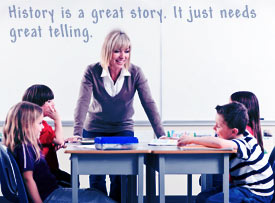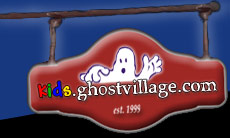Ghosts in the Classroom
Ghosts as a Learning Tool: History

History
is a great story. It just needs great story telling. Kids are eager to learn, but sometimes history becomes a series of dates, numbers, and names that don't mean anything. Ghosts offer an innovative way to teach this important subject, because you simply can't study spooks and specters without also studying the past.
Some historic sites with haunted reputations have incorporated ghosts into their tours because they were inundated by groups of school children asking questions like, "Is this place really haunted?" "Have you seen a ghost here?" "Who is haunting this old building?" Some of these docents and guides used the ghostly legends as a reward for paying attention by saying, "We'll tell you about the ghosts and show you where they were seen if you are quiet and pay attention during the tours." More innovative guides have incorporated the ghosts into the tour and use the legends and sightings as a tool to teach the actual lesson.
In Gettysburg, Pennsylvania, 51,000 were killed in a Civil War battle that took place between July 1st and 3rd, 1863. 51,000 is a staggering number. But it's just a number. It's cold. Hearing the tale of a Union soldier who still walks Devil's Den demands that we wonder why he's still there. It forces us to learn what took place at that part of the battlefield, it puts a human face on a statistic. The ghostly legend may be a sensational hook, but that hook raises the eyebrows of kids who are eager to learn about the world around them (even if they don't always want to admit it).
Ghosts as a Learning Tool: Writing
Ghosts aren't just about the past. The living witness to ghostly phenomena may go through a range of sensory experiences during an encounter. Writing for all the senses is a powerful lesson to budding writers.
Effective communication is based on tapping into the senses of the reader. Young writers of both fiction and nonfiction primarily use the sense of sight to tell a story. Developing the other ones is the first step in making a better writer. Sense words are also easily accessible to students, so the secondary objective of the lesson is to begin to teach the student that words have impact. The more precise, or intense, sense word the student can use, the stronger the narrative.
Horror and ghost stories are an effective tool to use in this case, because good scary storytellers know how to use all the other senses to evoke an emotional response. They also help to trigger the sixth sense, in this circumstance described as emotion and anticipation, because of the emotional nature of the story.
Click here for a ghostly writing lesson plan developed by author and educator, Christopher Balzano.
